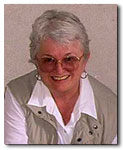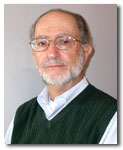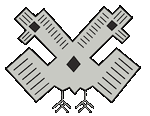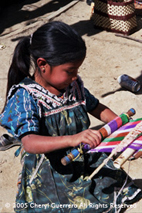About Us

Kathleen Mossman Vitale
 Former journalist, photographer and publications editor Kathleen Mossman Vitale has produced art-related documentaries since the year 2000. Kathleen lived in Latin America (Ecuador, Brazil and Peru) for 13 years, including two years as a Peace Corps Volunteer. She worked in journalism and publications in Virginia and Latin America prior to joining the high tech industry. She retired from IBM in 2000. In 2004, she co-founded the nonprofit Endangered Threads Documentaries and served as the CEO.
Former journalist, photographer and publications editor Kathleen Mossman Vitale has produced art-related documentaries since the year 2000. Kathleen lived in Latin America (Ecuador, Brazil and Peru) for 13 years, including two years as a Peace Corps Volunteer. She worked in journalism and publications in Virginia and Latin America prior to joining the high tech industry. She retired from IBM in 2000. In 2004, she co-founded the nonprofit Endangered Threads Documentaries and served as the CEO.
Early Documentaires:
- C.S. Price: Modernist Painter in Search of Spirit (2000) for the University of Oregon’s Museum of Art.
- Blossoms for the Mud: The Art of Wang Gongyi (2002) in English for the artist’s show in Eugene, Oregon; and Fleurs de vas (2002) in French for the artist’s show in Lyons, France.
Documentaries for ETD:
- Splendor in the Highlands: Maya Weavers of Guatemala (2005).
- A Century of Color: Maya Weaving & Textiles (English), and Un Siglo de Colores: Los Tejidos Mayas (Spanish) (2005).
- Manuela & Esperanza: The Art of Maya Weaving (English) and Manuela & Esperanza: El Arte del Tejido Maya (Spanish) (2009).
- Saving the Weavers: Small Assistance Projects for Maya Women in Highland Guatemala (English) and Restacando los Tejedores: Pequeños Programas de Asistencia para Mujeres Mayas en el Altiplano Guatemalteco (Spanish) (2010).
- Sheer Elegance: Surviving Strands of Ancient Maya Weaving (English with Spanish translation on screen) (2018).
Short videos with ETD:
- Languages of the Maya (2008)
- Pikb’il Weaving in Alta Verapaz, Guatemala (2009)
- Modern Maya Weavers of Guatemala (2011)
- Don Chooz: An Interview with Chooz Macz in Sanimtaca (English) (2016)
- Don Chooz: Una Intrevista con Chooz Macz en Sanimtaca (Spanish) (2016)
- Doña Leslie: An Interview with Leslie Hempstead Fairhurst (Revised)(2016)
- Raymond E. Senuk: Observations on Guatemalan Textiles (2016)
- Backstrap Weavers of Alta Verapaz: Se’b’ob’ (2016)
- Backstrap Weavers in Alta Verapaz: María Elena Tun Rax (2016)
- Backstrap Weavers of Alta Verapaz: María Calendária (2016)
- Backstrap Weavers of Alta Verapaz: Campat Aldea (2016)
- Christina Halperin PhD: Translucent Weaves in the Classic Maya Era (2018)
- Liz Frey on Learning to Weave Pikb’il (2018)
- Chip Morris Interview (English with Spanish text) (2018)
- Pedro Mesa Interview (Spanish with English text) (2018)
Paul Vitale
 Paul G. Vitale is a retired U.S. Foreign Service Officer who served in Latin America (Ecuador, Brazil and Peru) and Washington, DC, after an initial introduction to overseas work as a Peace Corps Volunteer. Trained as a City Planner, he worked with both USAID and the Peace Corps on urban programs, including low-income housing and related services. He also served as Peace Corps staff in urban development in the nation’s capital, and subsequently spent a decade as an Adjunct Professor at the University Of Oregon, teaching world urbanization. He co-founded ETD, and served as treasurer of the nonprofit’s Board of Directors and logistics manager in the field.
Paul G. Vitale is a retired U.S. Foreign Service Officer who served in Latin America (Ecuador, Brazil and Peru) and Washington, DC, after an initial introduction to overseas work as a Peace Corps Volunteer. Trained as a City Planner, he worked with both USAID and the Peace Corps on urban programs, including low-income housing and related services. He also served as Peace Corps staff in urban development in the nation’s capital, and subsequently spent a decade as an Adjunct Professor at the University Of Oregon, teaching world urbanization. He co-founded ETD, and served as treasurer of the nonprofit’s Board of Directors and logistics manager in the field.
Award for ETD
In October 2016, Paul and Kathleen Vitale were named Outstanding Alumni for Post-USAID Service by the USAID Alumni Association in the international category. The award presentation highlighted their work documenting the Maya Textile Tradition through the nonprofit Endangered Threads Documentaries. This was the first time the award had been given to a couple. In connection with the Outstanding Alumni Award, the Vitales gave a presentation on their work as part of the DECOR Newberry Cultural Series in Washington, DC.
Articles & Reviews about Endangered Threads Documentaries
WARP (Weave A Real Peace) Newsletter, summer 2015, Guatemala Repeals Law Requiring Use of Genetically Modified Corn Seeds, by Kathleen Vitale.
The Graduate Magazine, UC/Berkeley, Spring 2011, The Peace Corps is very Berkeley, by Dick Cortén, celebrating the 50th anniversary of the Peace Corps, by featuring the work of five Cal alumni and their work in the Peace Corps and afterwards, leading off with Paul and Kathleen Vitale.
The Reporter Newspaper, Sunday, March 20, 2011, Totally PC: Peace Corps experience shaped their entire lives.
Foreign Service Journal, February 2010, pgs. 36-38. The Third Chapter, by Paul Vitale.
Mar Museum Anthropology Review, Vol 4 No 1 (2010), Manuela and Esperanza reviewed by Carol Hendrickson; and Century of Color and Splendor in the Highlands reviewed by Walter E. Little.
WARP (Weave A Real Peace) Newsletter, Fall 2010, Saving the Weavers documentary review by Deb Brandon.
Hand/Eye On-line Magazine, September 2010, Endangered and Exquisite Fabric - Documenting the Art of Maya Weavers by Rebeca Schiller.
Sacramento Garden & Arts Center’s publication Chat, Jan/Feb 2009, Agave Fiber Crafts in Guatemala and Ecuador.
Sacramento Cactus and Succulent Society’s publication Thorny Issues, Vol 50 no 1, January 2009, Agave Fiber Crafts in Guatemala and Ecuador by Marilynn Vilas.
Times-Herald of Vallejo, March 9, 2008, Vitale Weaves Maya Culture Into Documentary by Rich Freedman.
Shuttle, Spindle, Dyepot Magazine, HGA, Spring 2008, Review of Century of Color: Maya Weaving & Textiles
Northwest Council for Languages publication Lingo, Vol 8 No 3, May 2008, Material Review: A Century of Color by Bridget Yaden, PNCFL President.
Times-Herald of Vallejo, Aug. 24, 2008, Century of Color to be screened at the de Young Museum.
The Textile Arts Council of the Fine Arts Museums of San Francisco, Sept 2008, Century of Color to be screened at the de Young Museum in San Francisco and the Hearst Museum at UC/Berkeley, in addition to other ETD videos playing continually at the Hearst Museum exhibition.
WARP (Weave A Real Peace) newsletter, Fall 2008, Endangered Threads Videos to be shown at the de Young and Hearst Museums.
The Berkeley Daily Planet, December 18-22, 2008, An Endangered People and Their Art, by Dorothy Bryant. The article focuses on the Guatemalan textile exhibition at the Hearst Museum, UC/Berkeley, and describes the ETD videos playing continuously during the show.
WARP (Weave A Real Peace) Newsletter, Winter 2007, Endangered Threads Documentaries Surveys 100 Years of Maya Weaving.
WARP (Weave A Real Peace) Newsletter, Spring 2006, Member Profile: Kathleen Mossman Vitale: Documenting Textile Traditions by Pegi Bevins.
Times-Herald of Vallejo, October 16, 2005, Filming the fabric of life.
ETD advisers, assistants, interns, narrators and volunteers (beginning with the most recent documentary project):
Christina Halperin, PhD is a Professor of anthropology at the University of Montreal. She advised on the documentary Sheer Elegance. Halperin is an anthropological archaeologist whose research examines ancient Maya Politics from the perspectives of household political economies, gender, materiality, and everyday life. She has published extensively on topics such as Classic Maya textile production, ceramic figurines, polychrome pottery, and landscape archaeology.
Liz Frey is a Professor of Art History and Fine Arts at Centralia College in Washington State. Frey is also a floor loom weaver and has studied Maya back-strap weaving in Guatemala and Chiapas, Mexico. Frey was part of the field production team for Sheer Elegance.
Jose Luis Leiva spent his first 25 years in Guatemala before getting a BA in Theatre Arts/Anthropology at the University of San Francisco, and a MFA in Scene/Costume Design at Stanford. Subsequently he was a lecturer in Communication Arts at the University of San Francisco and City College of San Francisco until retiring. He assisted ETD in refining the Spanish translations of the documentary Sheer Elegance to improve its usability in Guatemala.
Margarita Sorock,JD, PhD, holds a doctorate in Jurisprudence and a doctorate in Spanish language and literature. She is an author and translator now living in Cartagena, Columbia, where she taught on the university level for many years. She contributed translation work for several EDT documentaries and videos.
Barbara Knoke de Arathoon is an anthropologist associated with the Museo Ixchel in Guatemala City. She assisted with early research in Alta Verapaz for the documentary Sheer Elegance.
Callie Vandewiele was a volunteer and intern with ETD from 2008-10. She scouted out pikb’il weavers in Alta Verapaz, Guatemala, and learned to weave the ancient style. She assisted ETD in the field as a photographer through 2014.
Mario Chocooj is a graphic artist originally from Alta Verapaz, Guatemala. He contributed photos, graphic designs and translations in Spanish and Q’eqchi-Maya for several ETD productions.
Lina del Roble is a voice talent with credits in five languages. Sheer Elegance, as well as Manuela & Esperanza and Saving the Weavers in both English and Spanish, and assisted ETD with translation services.
Margot Blum Schevill is an anthropologist and author. She co-authored the scripts for Splendor in the Highlands and Century of Color, and acted as an advisor on Manuela & Esperanza.
The late Anne C. Wilson was an early supporter of ETD. She was a weaver who not only provided advice and technical knowledge over the years, but substituted as a cameraperson in the field, when necessary.
Cheryl Guerrero was an ETD volunteer and intern during early documentary projects. She provided photographic, script and editing support. Her work appears in several documentaries, as well as on the ETD website and publicity pieces.
Marta Lucía Beltrán was a volunteer Spanish adviser and narrated the documentary Century of Color in Spanish.
Denise Gallinetti volunteered as a photographer and cameraperson in Guatemala in 2005. Her work appears in ETD documentaries, website and publicity pieces.
Kendra Dillard assisted ETD in early applications for foundation grants.
Phillip Leigh is an anthropology fan and resident of Panajachel, Guatemala He provided advice, support and counsel for early ETD documentaries.
Fernando Pichiyá provided ideas, advice and Maya language translations, as well as wheels, for numerous exploratory trips throughout the highlands of Guatemala.
Beth Riley, a former Spanish teacher, volunteered as a photographer and cameraperson in Guatemala in 2005. Her work appears in two ETD documentaries.
Kathy Rousso volunteered with ETD in 2004-5, sharing her knowledge of agave fiber processing and crafts in Guatemala.

